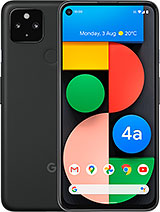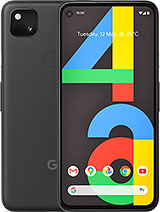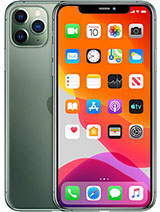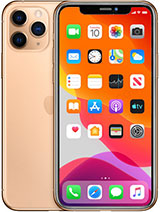iPhone 11 Pro Max vs. Pixel 4a Camera Comparison!! By JSL Review
What is going on everyone. My name is Jason, and this is the Google Pixel 4a versus iPhone 11 Pro max camera comparison. So if you're, like most other consumers, camera quality on a phone is probably up there as one of the most important features to consider when picking up a new smartphone and smartphone cameras have virtually replaced older point shoots and platforms like Instagram and ticked out being super popular, it's understandable that you want a phone that is packing some seriously capable cameras. Now, if you've done any up-to-date research at all, you've probably heard that the cameras on the newest flagship iPhones are considered by many as the best on any smartphone right now and as someone who owns the iPhone 11 Pro max, I can attest to the amazing quality coming out of the cameras on this very premium phone, but it's very likely that your research also mentioned another phone, that's renowned for what it can do with its cameras, and that's the Google Pixel, and I've been actually using the new Pixel 4a for about a month now and no doubt the image quality you're. Getting out of this thing is pretty incredible: now: here's the elephant in the room, the iPhone 11 Pro max costs, a whopping, 1200 or so dollars for the base model, making this one of the most expensive consumer smartphones available today. So in a way, I kind of expect the cameras to be pretty good for that high of a price tag, but the new Pixel 4a.
This thing only costs 350 us dollars. So with such a wide disparity in price, I thought I'd. Do a comprehensive camera comparison between these two phones to see a which one is better and b, which one is more worth it for the price plus at the end I'll go over, which phone I ultimately think is better in my opinion, which is definitely going to be tough as you're going to see here in just a second now a couple ground rules here. I recognize that the iPhone 11 Pro max has a total of four cameras, while the Pixel 4a has only two, as I am basing this review strictly on image and video quality, I'm only going to be using the primary front and back camera on the iPhone and not the ultra-wide or zoom lens. In this comparison, also, I'm going to be showing you guys the images videos, as is there, will be no additional editing.
So what you're seeing is what's coming straight out of the camera now before we get into the review, if you're into checking out the latest consumer tech products before you buy them or if you're, just a tech head. Like me, I make a video like this every single week, so make sure to hit that thumbs up button and don't forget to subscribe, so you can be the first to know when a new JSL anything and review question for you guys before I get into all this, which phone do, you think is better with its cameras, the iPhone or the pixel curious to get your thoughts. Let me know what you guys are thinking in the comments down below okay. First up, let's start off with the front-facing cameras and let's get the specs out of the way. The iPhone 11 Pro max is packing a 12, megapixel, f, 2.2, true depth, camera, which can shoot 4k video in either 24 30 or 60 frames per second, which is pretty ridiculous. The Pixel 4a, on the other hand, has an 8, megapixel, f, 2.0, selfie camera that can shoot video in only 1080p at 30 frames per second. Now before you let the spec differences, try and sway you in one way or another.
Take a look at these two selfies and first make a choice on which one you like better and then take a guess at which phone you think it came out of, let it marinate for a second really take a close look. Okay. So if you like the one on the left better, that's the image coming out of the iPhone 11 Pro max, which means, if you like the one on the right. You prefer the selfie on the Pixel 4a. Now for some additional context.
These selfies were taken in ideal lighting conditions outside with each phone's respective portrait mode on and what's going to be. A common theme here is that both are doing an outstanding job, no doubt class leading stuff here. But let's take a look at some differences and, let's start with color the Pixel 4a much like pixels before it has that signature cooler, temperature, something that you can notice easily on the color of the sweater and the leaves in the background. You'll notice that they're darker, when compared to the iPhone as Apple has a warmer color profile, probably made most clear when looking at the way. It manages skin tones there's more of a yellowish hue, which brightens up the image and makes it not as moody as the pixels overall you'll notice that the colors in general, on the iPhone are a bit more saturated and vibrant, and the image is just a tad bit sharper.
Take a look at the lips, and you'll see what I'm talking about and as this is a portrait mode photo edge. Detection on the iPhone is also better. You can see that the pixel completely got it wrong with this building. In the background and it's a bit rough on the edges now take a look at these two photos that were taken in a darker area outside, and you'll notice, the trends in color temperature and saturation levels, as I just mentioned, and I noticed that the Pixel 4a amps up the artificial enhancements a bit more in harder lit scenarios, there's definitely less noticeable blemishes on my face when compared to the photo coming out of the iPhone, but it's slightly less organic. Now, when taking selfies in very difficult backlit situations, the pixel does better here.
Both are clearly struggling, but the pixel does better, with dynamic range, as the iPhone's highlights are considerably more blown out, but in what lit environments both do a pretty solid job with dynamic range and the differences get harder to notice. Now, when it comes to video on the front-facing cameras, it's not surprising that you're going to get sharper footage on the iPhone as it is shooting at much higher resolution. But the 1080p video coming out of the pixel isn't too bad. The colors aren't as full and the iPhone is doing a better job, with both skin tones and overall exposure on the face. But again in well-lit environments, the pixel gets a lot closer in quality with the iPhone overall when it comes to the selfie cameras.
Both are excellent, and again you're getting class-leading images here, but at the end of the day, the iPhone 11 Pro has sharper more vibrant photo and video, that's ultimately more refined and not as rough around the edges. That being said, though, I will say that the differences here are pretty nitpick and which one you like better will likely come down to color preferences. Okay, shifting over to the rear cameras. Now, let's do a quick rundown of the specs. The Pixel 4a has a 12, megapixel, f, 1.7, wide angle, camera that could shoot 4k, video and 30 frames per second. The iPhone 11 Pro max has a 12, megapixel, f, 1.8, wide angle, camera that gives you 4k video in either 24 30 or 60 frames per second now same deal as before. Take a look at these two images choose the one you like better and take a guess at which camera it's coming out of so this time, if you prefer the picture on the left, that picture was taken on the Google Pixel 4a the picture on the right coming out of the iPhone 11 Pro.
So again, both are fantastic images. The quality here from both phones is truly top-notch and much like the front-facing cameras. The differences really come down to color science and image processing. First, when it comes to color, I noticed that the photos coming out of the pixel tend to have more of a magenta hue, while the photos coming out of the iPhone have more of a green and yellow. It's really subtle, but it's hard to unsee.
Once you look closely, the pixel is doing a better job, with contrast here, and you're getting more detail in the trees, there's definitely more of a focus on sharpening, but the iPhone does better with vibrancy as the colors are noticeably punchier. Here's another comparison where you'll see some differences when it comes to image processing again, the pixel does a better job capturing the detail in the trees, whereas in the iPhone focuses more on getting a saturated photo when looking at macro shots, the iPhone did a better job with focus on this one. It looks as though the lens of the pixel may have a shallower depth of field, making it more difficult to get a cleaner focus when up close on a subject, but the pixel is doing better here and again with its better management of contrast, you can see the detail of the individual flower petals better than on the iPhone now. One thing to add, I think the background blur is better on the iPhone it's not as aggressive and more natural than the pixels. Okay, when it comes to dynamic range, the pixel is doing a better job at lifting the colors in the trees.
In the background, it can make the image feel a bit over processed, but that also really comes down to preference. When you compare photos taken with portrait mode, both do a good job with separation, the blur again on the pixel is pretty aggressive and not as natural looking as the iPhones and last, as both cameras have their respective night modes. When comparing these two low-light images, the picture coming out of the iPhone is overall, more rich and better detailed. If you look at the trees on the right and the window straight ahead, the sensor is grabbing more detail there, and even in this one, you can see that the picture from the iPhone is way sharper, and it's even doing a better job pulling out some macrophotography skills with the stars in the sky. Okay, last, let's take a look at some video samples.
This video was shot on the Pixel 4a in 4k 30 frames per second, and I'm actually really impressed at just how much detail you can get when you're shooting stuff pretty close up. You can see that it's pretty similar in quality with the iPhone, but when you compare clips at a wider focal length in which the sensor is taking way more data, you start to see the differences. The clip here on the pixel is again decent, but it's not doing that great of a job with dynamic range and the colors come off pretty flat. Now take a look at the footage coming out of the iPhone, and you'll see the differences right away, there's way better dynamic range and the colors are clearly more vibrant. This is no doubt testament to the strength of apple's, a13, bionic chip and perhaps also an illustration of the limitations of the pixel's mid-tier processor, plus, with the ability to shoot multiple frame rates on the iPhone.
You have a lot more room for creativity in your shots. Let's just be real here. The iPhone has been dominating the smartphone video space for a while. It's seriously impressive what you're able to do with this phone? Okay, so, overall, when it comes to rear camera performance, I personally tend to prefer the still images coming out of the iPhone just a tad more they're, more consistent when it comes to quality, and I like the color science, that apple is baked into its image processing, both night mode and portrait mode, take advantage of the horsepower. The iPhone has to pump out a cleaner image, and the video capability is seriously unmatched.
Now, before you go all apple, fanboy bashing on me in the comments. Remember that this phone costs 1200, so it shouldn't be too surprising at all that the cameras perform better than a phone. That's almost a third of its cost, and in that vein, considering just how close the pixel is getting here in terms of overall quality, it's mind-bogglingly good value. I am so impressed at what this phone could do. It seriously leaves me in awe every time I see what the phone generates after I press the shutter and no doubt the overall quality you're getting here is and deserves to be at the very top.
But hey those are my thoughts and I want to hear what you guys think, which one do you prefer after taking a look at these pictures, let me know what you guys are thinking in the comments down below. Okay, that's about it, for this review. Don't forget to leave me a thumbs up if you guys find it useful. It really helps me out if you guys have any questions about the iPhone 11 Pro or the Pixel 4a, leave them down in the comments, and I'll be sure to get to you. Thanks for watching, and I'll see you guys in the next one you.
Source : JSL Review











![Identify & Resolve Battery Draining Issues on Android [How-To]](https://img.youtube.com/vi/ibo6XvuEM54/maxresdefault.jpg )
















